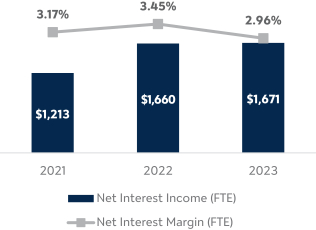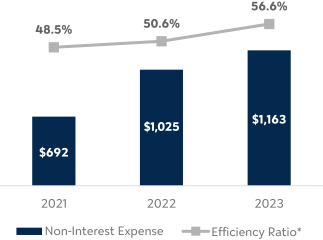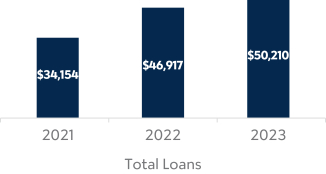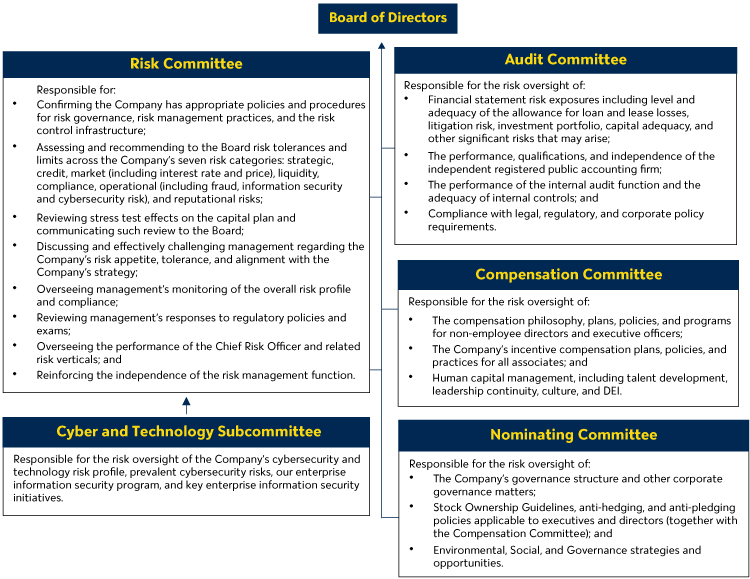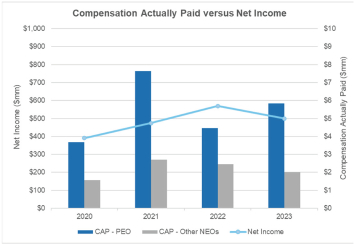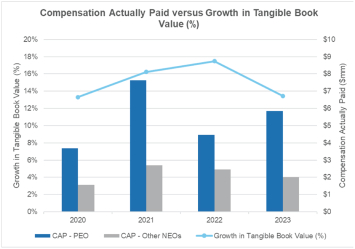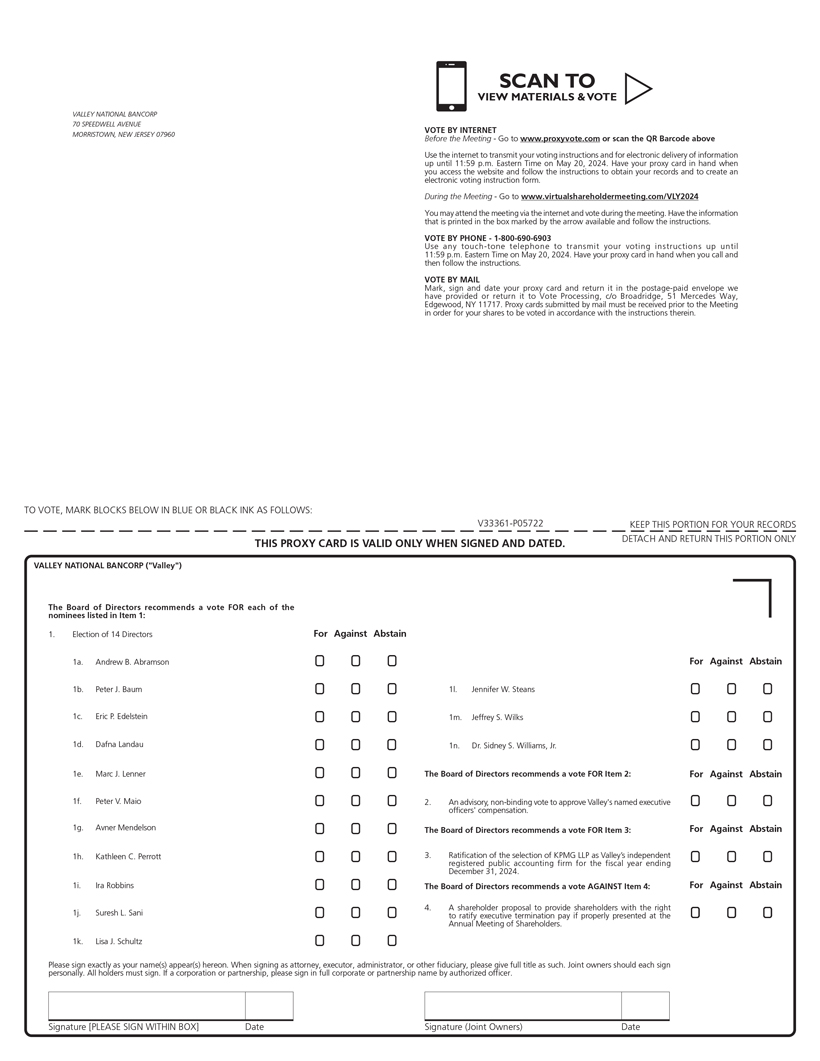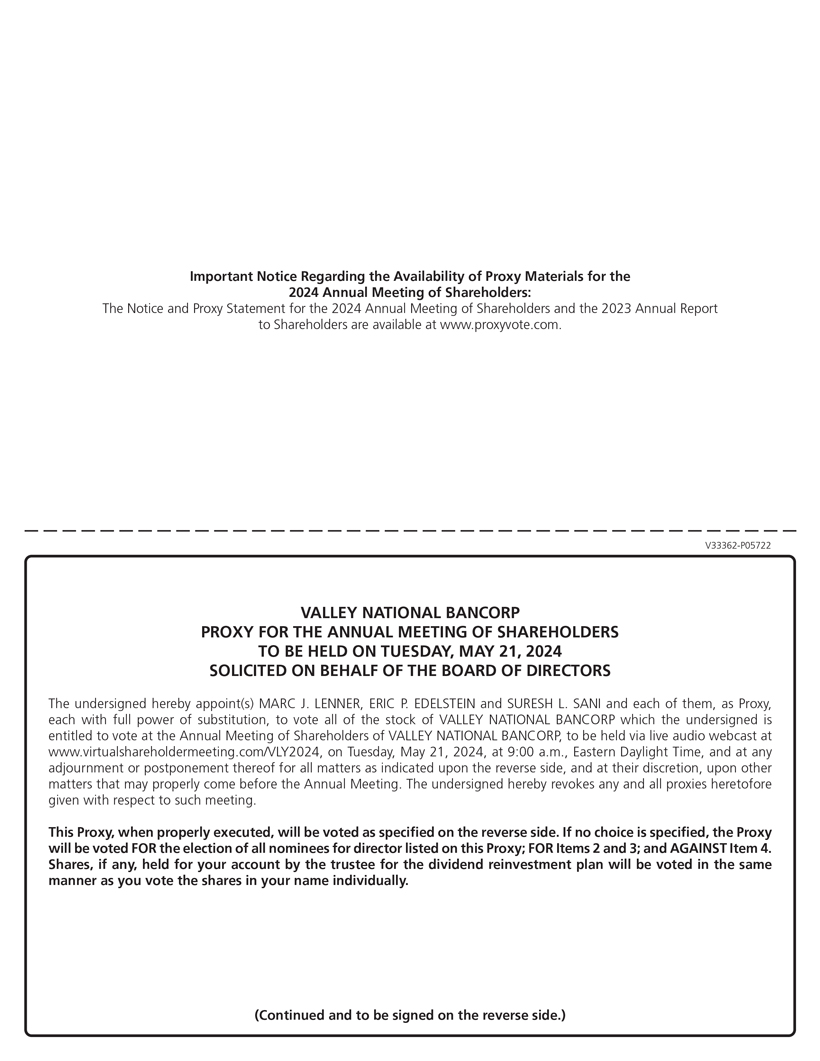
| A Letter to our Shareholders:
| ||
| To our Shareholders, Associates, Clients, and Community Partners:
By all measures, 2023 was an extraordinary year. Not just in the challenges our industry, economy, and society faced, but in the way we remained resilient, committed, and focused on delivering results for all our stakeholders.
This past year, our industry was turned on its head as we faced the largest banking crisis in more than a decade. Our economy continues to shift under the weight of an inverted yield curve, recessionary fears, inflationary pressures, wavering consumer confidence, and slowing demand. We have been plagued with partisan political infighting as a country and the growing fears of global instability amidst wars in Europe and turmoil in the Middle East.
It is far from hyperbole to say that these events had a profound impact on our business strategy, the way we work, and our path forward.
Despite these external variables, we were able to deliver on our mission and create opportunities for our stakeholders through a sustainable and predictable business model as we build towards our vision of becoming a premier relationship-based national bank.
Progress in the face of adversity
At our core, we are relationship bankers. This means we put our clients first and are committed to their long-term ambitions. Never was the value of this identity more evident than when the banking industry faced a liquidity crisis last March that shook the very foundations of our industry and resulted in several large-scale bank failures.
We partnered closely with our clients during these troubling events to reassure them that, as a strong, stable, and well-capitalized financial institution with a fiscally conservative legacy dating back to 1927, their relationship was safe at Valley. We reminded them that we’ve weathered these economic cycles before and that we put our customers at the center of everything we do because we know just how much is at stake for them and our collective communities.
Our greatest achievement this past year, and certainly our most ambitious, was our core systems conversion. Last October, we updated our legacy core banking system which represented a major step forward for Valley, enabling us to provide a better banking experience for our customers for years to come. This conversion, which is the largest core bank conversion our industry has witnessed in the past few years, touched almost every single Valley employee and certainly every customer. As a result, we’ve established a new platform with enhanced features and upgrades that will allow us to deliver more valuable service at every touchpoint to meet our customers’ needs.
|
IRA ROBBINS Chairman and CEO | |
| i |















